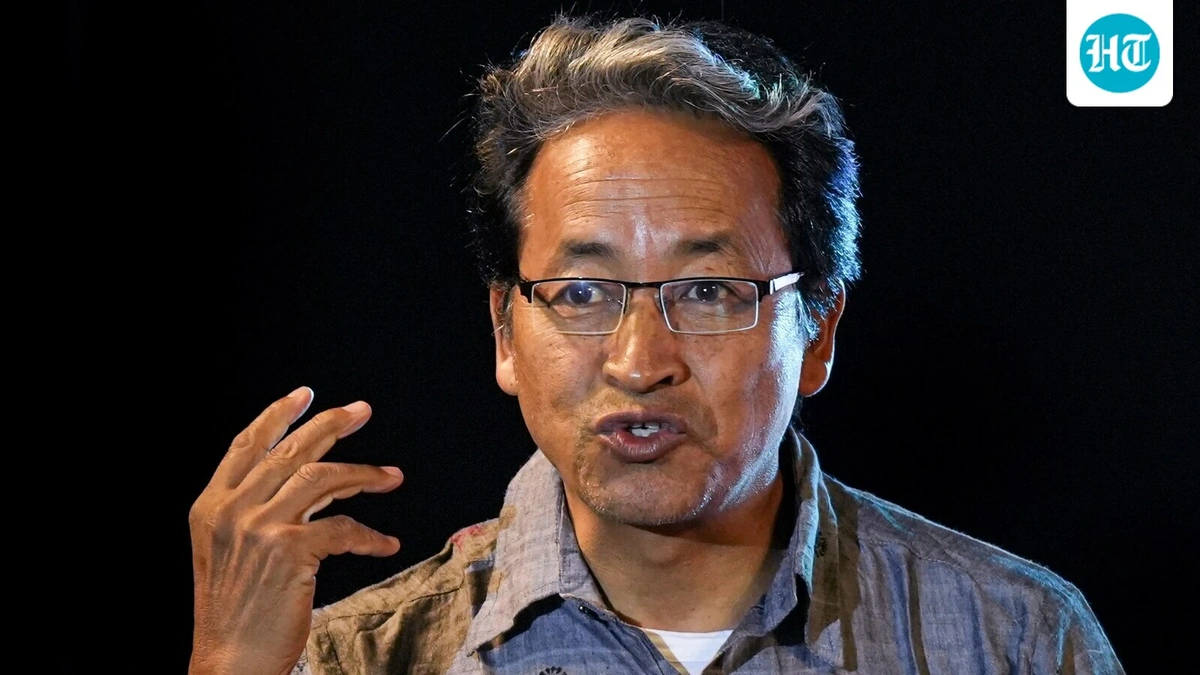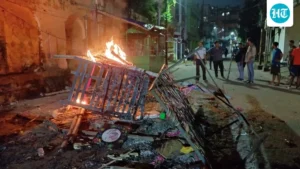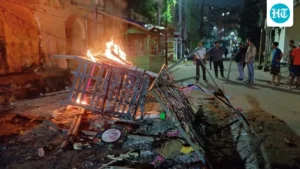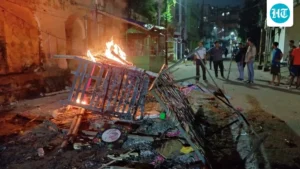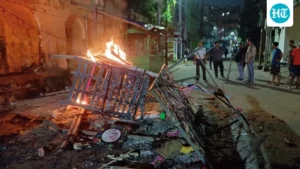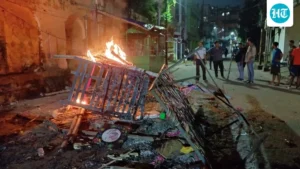Supreme Court Asks Centre, Ladakh for Response on Sonam Wangchuk’s NSA Detention Plea
The Supreme Court has officially stepped into the debate surrounding Sonam Wangchuk’s detention , demanding answers from both the Central government and the Ladakh administration. But, here’s the thing, this isn’t just about one person’s legal battle; it’s a pivotal moment that could redefine the relationship between the region and the powers in Delhi. What fascinates me is why this happened now, and what it signals about the future. Let’s dive in, shall we?
The ‘Why’ Behind the Detention Plea | More Than Meets the Eye
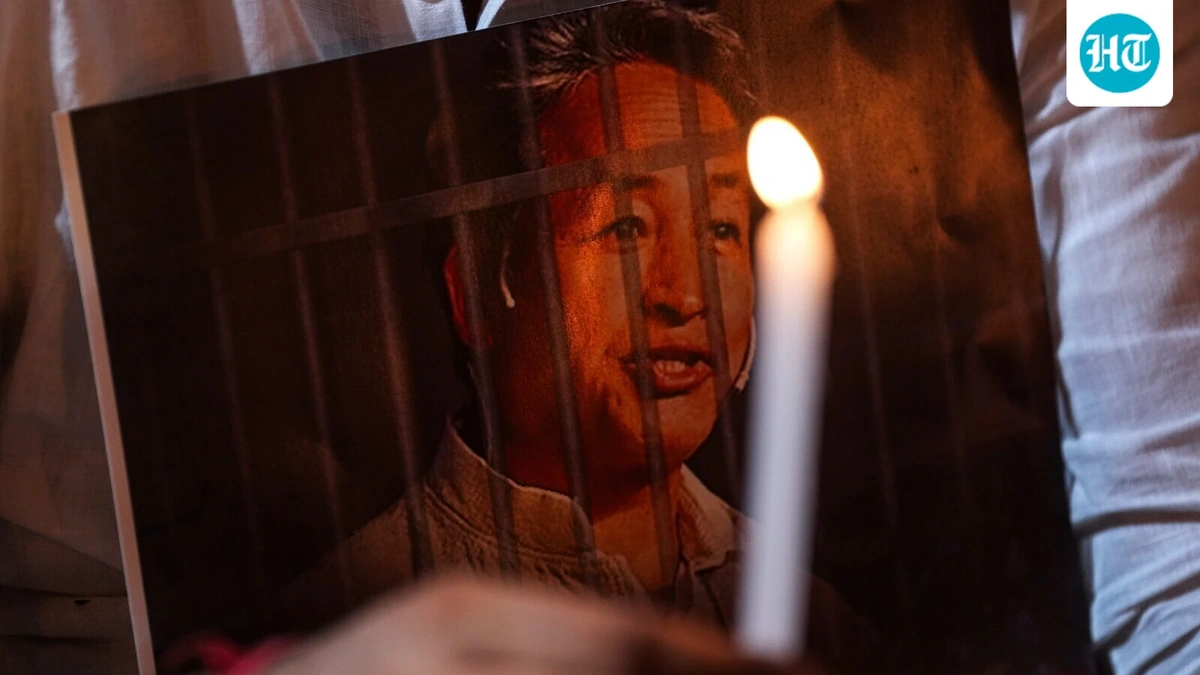
So, why is the Supreme Court even involved? Well, Wangchuk’s detention, or rather the alleged detention under the National Security Act (NSA), raises serious questions about the use of such stringent laws in a region already grappling with complex political dynamics. The NSA is a preventive detention law, meaning it allows authorities to detain individuals who are deemed a threat to national security before they even commit a crime. It’s a powerful tool, and its application needs to be thoroughly justified – especially in a sensitive area like Ladakh. Think of it as a pre-emptive strike against potential disruption, but with huge implications for civil liberties.
But what’s the full story of this Ladakh activist ? The petition before the Supreme Court isn’t just about Wangchuk’s individual case; it’s about the broader issue of dissent and freedom of expression in Ladakh. The timing of this also matters – the region has been experiencing significant political and social upheaval since the abrogation of Article 370 and the creation of the Union Territory. Was this detention politically motivated? The court wants to know.
The Implications for Ladakh and Beyond
The court’s intervention signifies something HUGE: the judiciary recognizes the potential for misuse of power. This case could set a precedent for how the government handles dissent in other sensitive regions of India. The ruling on this plea could either embolden the government to use such measures more freely, or it could act as a check on executive power, ensuring that fundamental rights are protected even in areas deemed strategically important. The implications ripple far beyond the mountains of Ladakh .
The Supreme Court’s action also shines a spotlight on the delicate balance between national security and individual liberties. The government will have to present a strong case to justify Wangchuk’s detention under the NSA. This will involve providing evidence that he posed a genuine threat to national security, something the court will scrutinize closely. It’s not enough to simply claim that his actions were disruptive; the government will need to demonstrate a clear and present danger. This is important for maintaining public trust in the government.
What Next? Understanding the Legal Process
So, what happens now? The Centre and the Ladakh administration are now required to file their responses to the Supreme Court’s notice. This will involve outlining the reasons for Wangchuk’s detention and providing any evidence they have to support their claims. The court will then review these responses and hear arguments from both sides before making a final decision.
The process is likely to be lengthy and complex, involving detailed legal arguments and careful consideration of the evidence. But the outcome will have far-reaching consequences. Let me rephrase that for clarity: this isn’t just about Sonam Wangchuk’s plea ; it’s about the future of dissent in India. The legal arguments involved in this case include the interpretation of the National Security Act, the scope of fundamental rights, and the balance between national security and individual liberties. The Supreme Court’s decision will provide clarity on these crucial issues, guiding future actions by the government and setting a standard for the protection of civil liberties.
The Supreme Court has asked the government to provide all documents related to the detention order. It is not clear under what circumstances the order was passed. The court has expressed concern over the lack of transparency and has questioned the government on whether or not the due process was followed. The Supreme court has also appointed a special committee to look into the matter.
Sonam Wangchuk’s Activism and the Road Ahead
Now, let’s not forget about the man at the center of all this: Sonam Wangchuk. An engineer, innovator, and education reformist, Wangchuk is known for his work in promoting sustainable development and education in Ladakh. He’s become a symbol of local aspirations and concerns, often speaking out on environmental issues and the preservation of Ladakhi culture. His activism has made him a popular figure in the region, but it has also put him at odds with the authorities at times.
Wangchuk’s detention has sparked widespread outrage and protests in Ladakh, with many people viewing it as an attempt to silence dissent and suppress local voices. The case has also garnered national and international attention, with human rights organizations and activists raising concerns about the use of the NSA and the treatment of activists in India.
The resolution of this case will not only determine Wangchuk’s fate but will also shape the future of activism and dissent in Ladakh. What happens next will depend on a complex interplay of legal arguments, political considerations, and public opinion. The Supreme Court’s decision will be a critical moment for the region, sending a powerful message about the importance of protecting fundamental rights and upholding the rule of law. We have to wait and watch.
Impact of NSA detention on Local sentiments
The detention of Sonam Wangchuk has significantly impacted local sentiments in Ladakh. It has created a sense of fear and uncertainty among the residents, who view Wangchuk as a champion of their rights and interests. The incident has raised concerns about the government’s approach towards dissent and freedom of expression in the region. The local community feels that their voices are being suppressed, and their concerns are not being addressed. This has led to widespread protests and demonstrations, with people demanding Wangchuk’s immediate release and calling for greater respect for civil liberties. The incident has also strained the relationship between the local community and the government, making it difficult to find common ground on various issues.
The incident has had a chilling effect on activists and human rights defenders in the region, who now fear that they too could be targeted for speaking out against injustice. This has created a climate of self-censorship, where people are hesitant to express their opinions or participate in peaceful protests. The impact of Wangchuk’s detention on local sentiments is likely to be long-lasting, and it will take time for the community to heal and rebuild trust with the government. It is essential for the government to address the concerns of the local community and ensure that civil liberties are protected.
The Supreme court case brings hope that there can be light at the end of the tunnel for the local population.
FAQ Section
Frequently Asked Questions
What exactly is the National Security Act (NSA)?
The National Security Act (NSA) is an Indian law that allows preventive detention of individuals deemed a threat to national security. It basically means you can be held in custody before committing a crime, if authorities believe you might commit one.
Why is the Supreme Court involved?
The Supreme Court is involved because Sonam Wangchuk’s NSA detention raises questions about the legality and justification of using such a stringent law, potentially violating his fundamental rights.
What is Sonam Wangchuk known for?
Sonam Wangchuk is renowned for his innovative engineering, educational reform, and environmental activism in Ladakh. His work focuses on sustainable development and preserving Ladakhi culture.
What are the potential implications of this case?
This case could set a precedent for how the government handles dissent in sensitive regions. It could either embolden the use of preventive detention or act as a check on executive power, protecting civil liberties.
What has been the impact of this detention on local population?
Wangchuk’s detention has caused outrage and protests in Ladakh, with people viewing it as an attempt to suppress local voices and silence dissent. It has strained the relationship between the local community and the government.
The Ladakhi activist Sonam Wangchuk , faces challenging times, but the intervention of the Supreme Court brings a sliver of hope.
